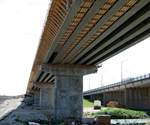Looking for butt-kickers
HPC editor-in-chief Jeff Sloan is looking for that larger-than-life bridge builder or automaker that is willing to take a Boeing-like composites plunge so everyone else takes a whipping for a bit and has to get onboard to keep up.
My son participates on the speech and debate team in high school. Before a debate, he and a partner research a question and then prepare to argue both in favor of and against the assertion posed by the question. No matter what the debater’s personal feelings are on the topic, he or she must have command of all pertinent facts, pro and con, and be able to make a case either for or against with passion and conviction. As my son and others argue so forcefully, armed with apparently unassailable facts and figures, I often wonder: What does it take to change the mind of a person who is firmly wedded to a belief? My son is not really trying to change anyone’s mind in his debates; he’s just trying to prove to the judge that his command of information, combined with a compelling delivery, is better than his opponents’.
But what about bigger issues? Do you not believe that global warming is caused by human-generated pollutants? If not, how much data and evidence would you need to be convinced? Do you not believe in animal and human evolution as originally developed by Charles Darwin? If not, how much data and evidence would you need to be convinced? Is there no amount of evidence that will change our thinking about some of our very basic beliefs?
Bringing this closer to home: Composite materials, pound-for-pound, are obviously superior to legacy materials, including steel and aluminum, in many applications. They’re better in many bridge applications, they’re better on boats, they’re better on wind blades, they’re better on cars and trucks.
You don’t have to read more than a few issues of CT to find ample and compelling evidence that composites not only are doing the job in many demanding applications, but could be doing more in many other applications.Take, for instance, this month’s cover story on composite rebar (see "Hidden revolution ...." under "Editor's Picks," at right); the benefits of composite rebar are so numerous, it’s hard to read this report and not wonder why this application didn’t take off years ago. Isn’t there enough evidence to convince civil engineers everywhere of the advantages of composites?
That, of course, is not the question. There is plenty of evidence. Composites’ main problem is that they are not steel or aluminum or concrete, and moving civil engineers or automotive designers away from those materials will require much more than just a compelling argument.
I asked one composites industry veteran the other day what it would take to get the automotive industry, for instance, to embrace composites more thoroughly. His answer was simple: “An ass-kicking. An automaker willing, like Boeing, to take the plunge, succeed, be profitable and in the process, drag the rest of the automotive industry along with it.”
So, maybe that’s our answer: Stop preaching to the choir and start looking for that larger-than-life bridge builder or automaker that is willing to take a Boeing-like composites plunge so everyone else takes a whipping for a bit and has to get onboard to keep up. We’ll keep our eyes peeled, but let us know if you run across another Boeing or two.
Related Content
Infinite Composites: Type V tanks for space, hydrogen, automotive and more
After a decade of proving its linerless, weight-saving composite tanks with NASA and more than 30 aerospace companies, this CryoSphere pioneer is scaling for growth in commercial space and sustainable transportation on Earth.
Read MoreMaterials & Processes: Fabrication methods
There are numerous methods for fabricating composite components. Selection of a method for a particular part, therefore, will depend on the materials, the part design and end-use or application. Here's a guide to selection.
Read MorePlant tour: Spirit AeroSystems, Belfast, Northern Ireland, U.K.
Purpose-built facility employs resin transfer infusion (RTI) and assembly technology to manufacture today’s composite A220 wings, and prepares for future new programs and production ramp-ups.
Read MoreMaterials & Processes: Composites fibers and resins
Compared to legacy materials like steel, aluminum, iron and titanium, composites are still coming of age, and only just now are being better understood by design and manufacturing engineers. However, composites’ physical properties — combined with unbeatable light weight — make them undeniably attractive.
Read MoreRead Next
A hidden revolution: composite rebar gains strength
Fiber-reinforced plastic (FRP) replacing coated steel in more reinforced-concrete applications.
Read MoreComposites end markets: Energy (2024)
Composites are used widely in oil/gas, wind and other renewable energy applications. Despite market challenges, growth potential and innovation for composites continue.
Read MoreCW’s 2024 Top Shops survey offers new approach to benchmarking
Respondents that complete the survey by April 30, 2024, have the chance to be recognized as an honoree.
Read More











.jpg;maxWidth=300;quality=90)














